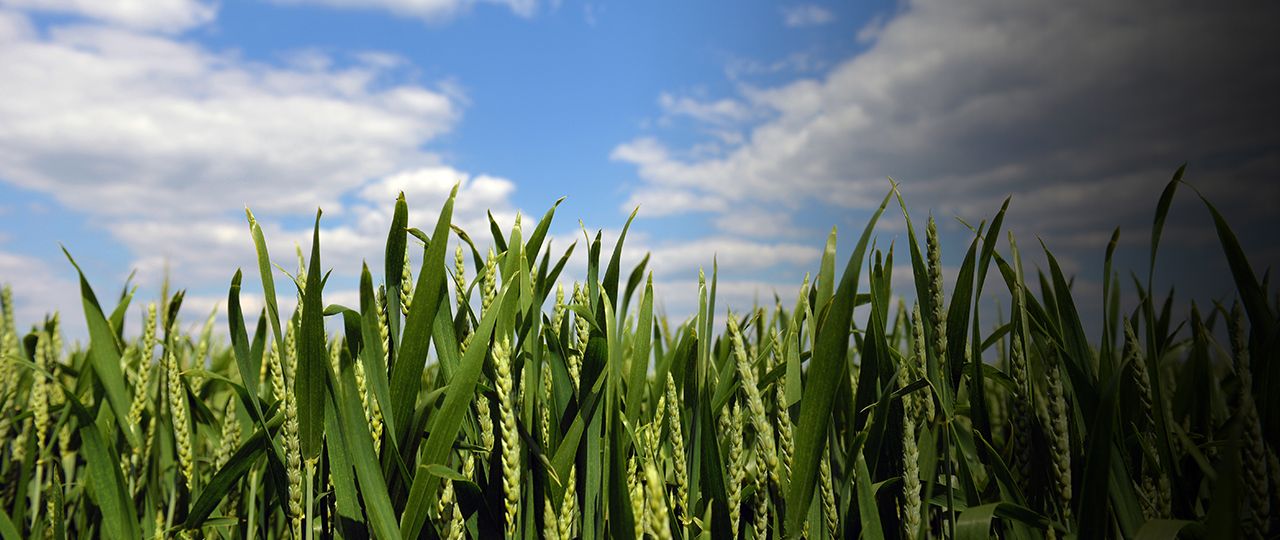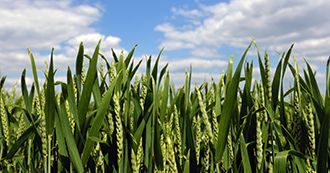
Welcome to this quarter’s Farming Update, produced by Strutt & Parker's Farming Research Group.

This review reports on market and administrative issues that affect farmers’ business decisions and on which they may need to act.
Click here to read the full Farming Update Summer 2017
Arable crops
Global
As the northern hemisphere harvest approaches (it may feel a long way off, but combines will be rolling in the UK in less than two months) the global supply and demand estimates for the current 2016/17 year continue to show record production of grains at 2,594 million tonnes according to the IGC (International Grains Council), and record ending stocks of 635 million tonnes. The result is that the importing countries and consumers are confident in their ability to secure enough wheat and maize to meet their needs, meaning that world prices are treading water.
However, the recent trend of ever increasing grain stocks, which has run for around five years, is forecast to come to an end in 2018. The USDA, the IGC and other analysts are all forecasting lower production and reduced global stocks of grain at the end of the 2017/18 harvest year. The USDA forecast that wheat production will be down 15 million tonnes (2%) to 737.8 million tonnes, and maize production down 31 million tonnes (3%) to 1,034 million tonnes. The main reductions in wheat production are forecast in Australia, the former Soviet Union, and the US, which will more than outweigh increased production in the EU and India. Consumption is also expected to fall, but by a smaller amount, all of which is expected to result in ending stocks of all grains at the end of 2017/18 to reduce to 599 million tonnes according to the USDA and 611 million tonnes according to the IGC.
UK
In the UK we are in a slightly different position to the world in general. Carry-over grain stocks are forecast to be relatively low, and this added to the weak pound against euro and dollar is helping to keep prices firm. This is because some consumers are choosing to import grain to ensure continuity of supply up until the coming harvest. The weaker pound makes imports more expensive which helps support the domestic price. Added to this recently, the impact of the long dry spell during April and early May has caused concerns for yields and this has encouraged the market upwards in recent weeks. Old crop wheat has moved up to £143/T at the time of writing towards the end of May, although little actually remains on farm. Of more interest to growers is the new crop price, which has also moved up gradually, to £130/T for harvest movement and £135/T for November. Having reached these levels, the market is expected to track the global market with adjustments for currency fluctuations. Being significantly better than last year’s prices, most of our clients have sold between 10% and 35% of their expected tonnage forwards at these levels.
In terms of oilseed rape, prices have not reacted much to the dry weather across Europe. The UK crop is expected to have passed the dry spell reasonably unscathed in most areas, although drier parts of Essex have (as last year) been forced to irrigate to keep crops going. Overall prices are remaining steady, with new crop oilseed rape at around £300/T. The consensus in the trade is that this has the potential to improve, particularly if yields fail to impress in Europe when the combines start moving.
2017 Crops
Winter Wheat
First wheats seem to have retained yield potential, following much needed rains – between 25 and 50mm across much of the country – which have enabled crops finally to pick up nutrients.
Yields of second wheats could be as much as 20% down as it looks as though rain has come too late for the ear number which has been set. These crops will need near perfect June conditions to beat 5-year average yields.
Generally, septoria disease pressure has been low to date, enabling fungicide savings to be made. Flag leaf emergence has however occurred at the same time as recent rain events which is justifying a robust rate of SDHI fungicide at T2 timing.
Winter Oilseed Rape
Where a healthy crop exists, sclerotinia pressure has been low enabling growers to use just one flowering spray. Crops are now off flower and look to be podding up well.
Spring Crops
Cold weather, with frosts through to late April, has delayed spring crop drilling for large parts of the country, and the linseed area in particular is expected to be much reduced. This is because some farmers decided not to drill it and others have had to rip it up due to poor germination. Some will fallow the land instead, whereas others have replaced it with maize for forage or anaerobic digesters.
Rain has come just in time to keep spring barley, beans and sugar beet going, many of which have had next to no rainfall since drilling.
The update reports on market and administrative issues that affect farmers’ business decisions and on which they may need to act.
